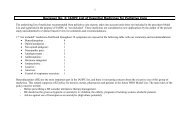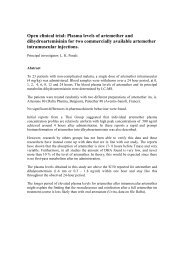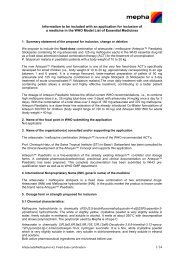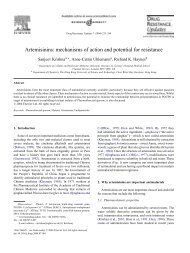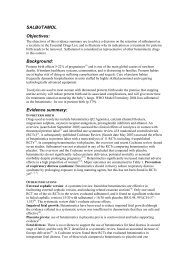SODIUM VALPROATE IN CHILDHOOD EPILEPSY
SODIUM VALPROATE IN CHILDHOOD EPILEPSY
SODIUM VALPROATE IN CHILDHOOD EPILEPSY
You also want an ePaper? Increase the reach of your titles
YUMPU automatically turns print PDFs into web optimized ePapers that Google loves.
8. Information supporting the public health relevance<br />
(epidemiological information on disease burden, assessment of current<br />
use, target population)<br />
Epilepsy is the most common serious neurological disorder and is one of the world’s<br />
most prevalent noncommunicable diseases.<br />
Due to differences in inclusion criteria, classification, diagnosis and case<br />
ascertainment methods, incidence and prevalence rates have varied considerably in<br />
different studies. If febrile seizures, neonatal seizures, single seizures or seizures in<br />
acute illnesses are included, the figures may be elevated several fold.<br />
Data from the WHO (1) indicate there are over 50 million sufferers of epilepsy in the<br />
world today of whom 85% live in developing countries. Globally, there are an<br />
estimated 2.4 million new cases each year and at least 50% of these cases begin in<br />
childhood or adolescence.<br />
Incidence is defined as the frequency of new cases of a disease in a defined<br />
population during a specified period of time (e.g. a calendar year).<br />
When epilepsy is defined as recurrent, unprovoked seizures, the average annual<br />
incidence in developed countries is quoted between 40-70 per 100,000 of the general<br />
population (2,3,4,5,6) .<br />
In developing countries, this figure is much higher at around 100-190 per 100,000 of<br />
the general population per year (4,5,6,7) . The main reason for the higher incidence of<br />
epilepsy in developing countries is the higher risk of experiencing a condition which<br />
can lead to permanent brain damage e.g. parasitic infection such as<br />
neurocysticercosis and malaria; meningitis; pre and perinatal complications and<br />
malnutrition.<br />
The incidence of recurrent seizures is highest in the first year of life and declines<br />
thereafter throughout childhood and adolescence (4) . Incidence decreases from ~ 150<br />
per 100,000 in the first year of life to ~ 60 per 100,000 at ages 5-9 years and 45-50<br />
per 100,000 in older children (27) . Most studies that provide incidence rates separately<br />
for boys and girls find slightly higher total rates for boys (4) . This difference in sexspecific<br />
rates varies by age however as it is suggested that before 5 years, incidence<br />
rates are ~ 30-60% higher in girls than boys while rates tend to be 10-20% higher in<br />
boys through later childhood and adolescence (4) . Sex differences may reflect<br />
differences in predominant seizure types at different ages, differences in exposures<br />
to risk factors because of social differences in the rearing of male and female<br />
children, changes in susceptibility to seizures in boys and girls with age or variations<br />
in diagnosis by sex.<br />
Prevalence is a measure of the number of new and existing cases (both new and old)<br />
of epilepsy in a defined population at either a specific point in time (point prevalence)<br />
or over a defined interval of time such as a year (period prevalence).<br />
Again, like incidence rates, prevalence rates quoted can be influenced depending on<br />
whether persons with single seizures, febrile seizures, acute symptomatic seizures or<br />
only recurrent unprovoked seizures are counted as cases.<br />
The usual prevalence figure quoted is ~ 5-10 cases per 1000 of the general<br />
population (3,4,5,6,7) (excluding febrile convulsions, single seizures and inactive cases).<br />
In children, estimates are of the order of 4-5 per 1000 children (2,4) .<br />
Sodium valproate page 2



